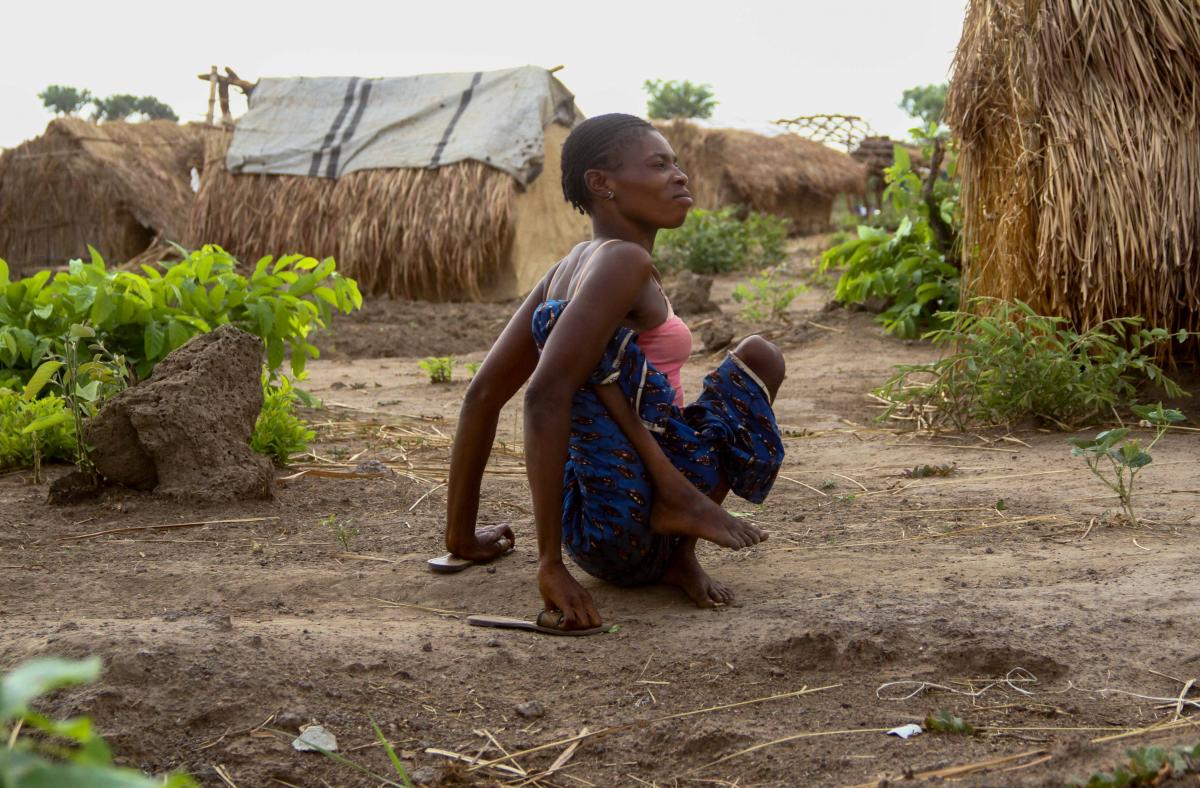Since March, we’ve been reporting information on rising violence collected via our Early Warning Radio Network in central Africa. Just this week, we released our LRA Crisis Tracker Midyear Security Brief, which summarizes trends in armed group violence in eastern Central African Republic (CAR) and neighboring areas of northeastern Democratic Republic of Congo (DRC) so far this year.
As dozens of communities in this region of central Africa are facing a heightened level of risk, it’s important to note that certain marginalized groups, including women, persons with disabilities, and members of minority groups, are especially vulnerable. They face unique challenges amidst rising sectarian violence and their specific needs must be considered when developing solutions to protect and increase the resilience of communities.
FUND PROGRAMS THAT HELP PROTECT THE MOST VULNERABLE
Last month, our friends at Human Rights Watch reported on the challenges facing Central Africans with disabilities when outbreaks of violence occur in their community as well as in internal displacement camps where tens of thousands have taken shelter.
Human Rights Watch researchers found that difficulties with mobility put the disabled at a significantly greater risk of death amid violence in CAR. In a news release, Human Rights Watch shared the story of a 16-year-old boy named Francis whose physical disability prevented him from being able to flee on his own when his community was attacked. Fortunately, his father was able to use a wheelchair to push Francis 75 kilometers to safety in another town. Others, like Clarise, a Central African woman who is unable to walk, do not have the same assistance Francis had. When violence broke out in her community, Clarise had to crawl 15 kilometers to safety, a journey which took her a full week.
Another woman with a disability that prevents her from being able to walk, Jeanette, told Human Rights Watch researchers that, when a group of armed fighters attacked her community, her father was killed and her mother fled without her. She was left alone with her two young children when her home was set on fire and she was forced to flee. Jeanette was able to crawl to safety, but her children were drowned as they tried to cross a stream.

“Jeanette,” a 27-year-old polio survivor, in the “MINUSCA” camp in Kaga-Bandoro. “I do not have a wheelchair and I have to use shoes on my hands to move around… It is very dirty and I’m filthy in other people feces if I try to use the toilet. I am scared it will make me sick,” she said. © 2017 Edouard Dropsy for Human Rights Watch
Once within the relative safety of internal displacement camps in CAR, those with physical disabilities continue to face challenges of mobility, which put them at continued risk of being injured or killed during possible outbreaks of violence. People with disabilities also face health risks in camps if they must crawl on their hands to reach camp toilets and showers and often struggle to receive aid provided to those living in the camp.
The report released by Human Rights Watch and others like it are critical to ensuring that the concerns and needs of the most vulnerable are addressed as local communities and humanitarian organizations develop strategies to improve the safety of Central African civilians. This includes people with physical and intellectual disabilities as well as women and members of minority groups who are often targeted by violence, as well as youth, who are more vulnerable to armed group recruitment.
That’s why all of our locally-led programs in CAR, DRC, and South Sudan are designed to include and support members of all different groups within communities. Invisible Children-supported Peace Committees include representatives of women’s groups, religious organizations, youth groups, minority groups, and other local civil society to ensure that as these groups work together and are able to address the needs and concerns of the community as a whole.

We also support community-led initiatives that specifically address the needs of particularly vulnerable groups. Invisible Children-supported Victims’ Associations bring together individuals who have experienced violence for support in healing from trauma. The technical training programs provided through our community partners at Vie et Espoir help create economic opportunity for youth at risk of armed group recruitment. Locally-run transit centers and host home networks help provide for the physical and psychosocial needs of women and children returning from armed group abduction.
As violence continues to spread across central Africa, programs like these, which address the needs of those facing the harshest realities of insecurity, are critical to improving the safety of thousands. But they aren’t possible without your support.
Help us reach our goal of raising $5000 to support inclusive, community-led programs that are helping to prevent violence and save lives.
HELP US RAISE $5,000 TO SUPPORT THE NEEDS OF THE MOST VULNERABLE. DONATE TODAY.
Think people should hear about this?